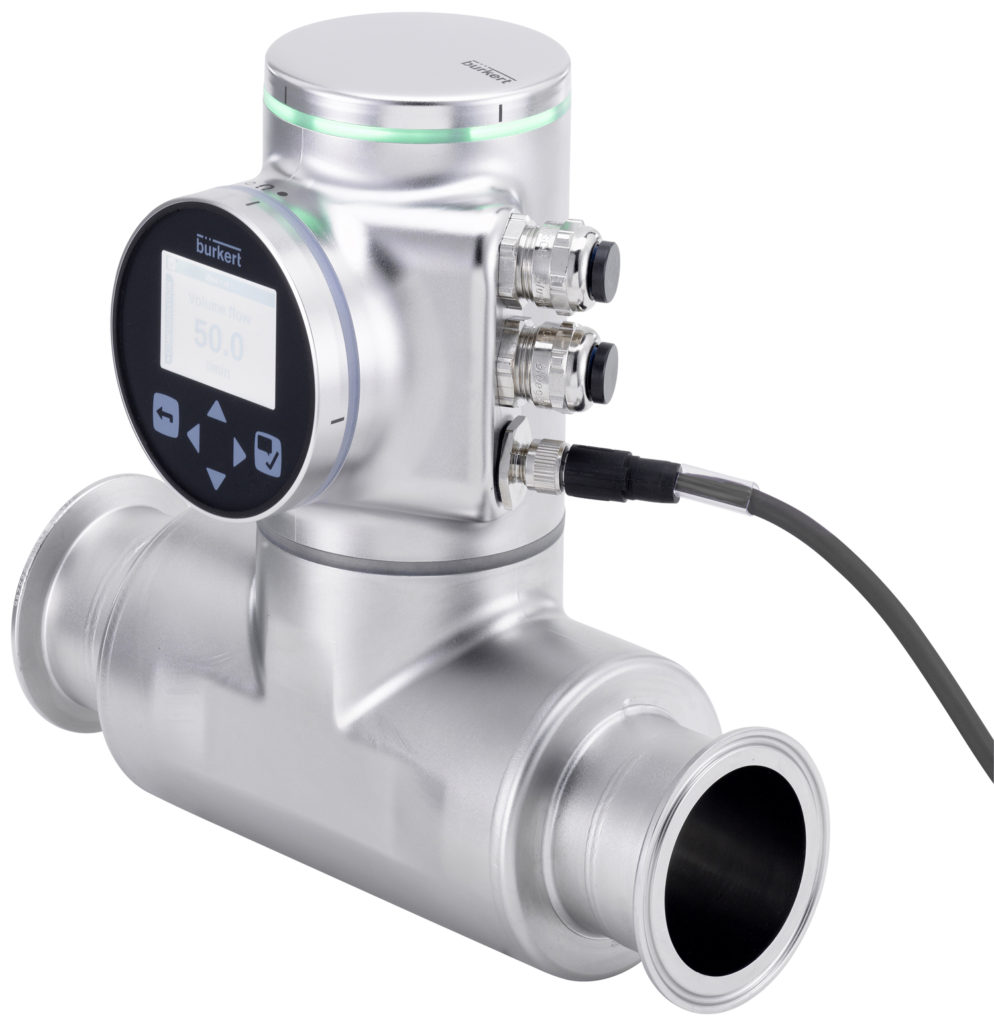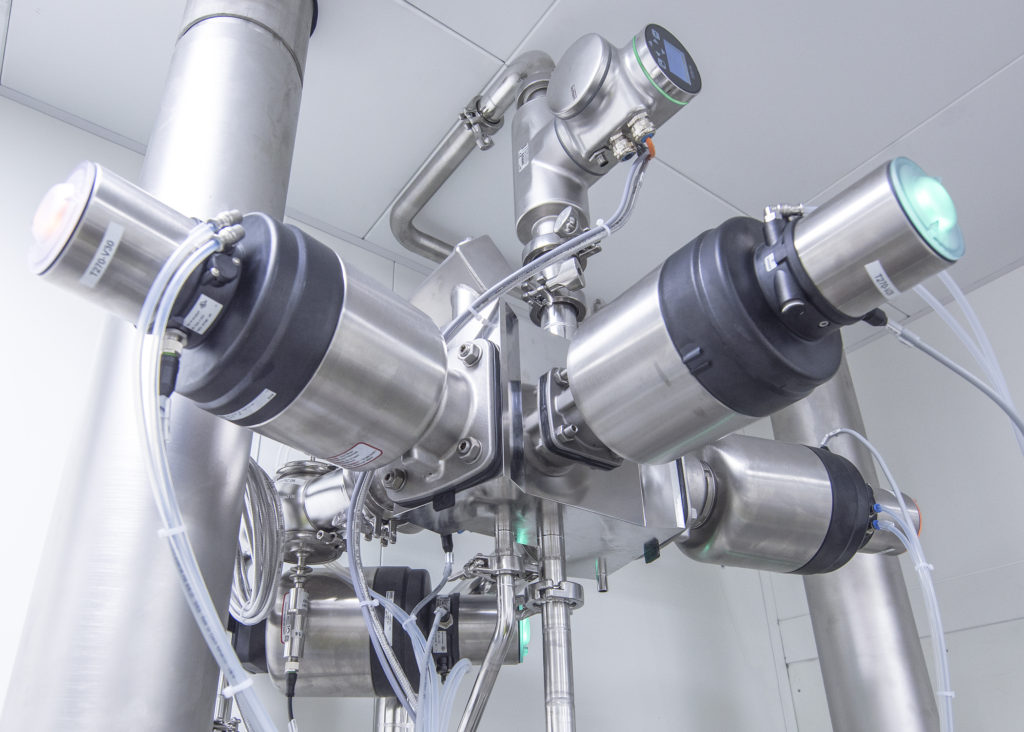Ian Webster looks at how Coriolis and Surface Acoustic Wave flowmeters match up
Flow measurement of liquids is an essential requirement for the control of many manufacturing processes – since accurate control improves efficiency and guarantees quality.
While there are a number of different technologies available, when high accuracy is the requirement the Coriolis flowmeter has so far been the default choice.
However, the development of Surface Acoustic Wave (SAW) technology for use in flowmeters has presented a challenger in the market with potentially a host of additional benefits.
For those involved in hygienic applications, such as pharmaceutical, food and beverage industries, the equipment used for product manufacturing, including sensors, must meet stringent hygiene standards while also delivering excellent performance.
Developing products that can operate reliably in this environment requires considerable dedication and expertise in order to achieve the required standards.

Coriolis design
Coriolis flowmeters have until now been regarded as the top-of-the-tree in terms of specification for a flowmeter due to their versatile capabilities for both fluids and gases as well as the ability to measure mass flow. However, the initial cost of such devices can be very high and they do have some constraints.
The design of the Coriolis flowmeter causes a pressure drop across the flowmeter and this can affect the upper limit of the measurement range. The pressure drop increases with viscosity as well as flowrate and the corresponding velocity through the meter.
Additionally, the size and weight of the Coriolis flowmeter requires it to be carefully supported within the process pipework.
The space required for Coriolis flowmeters is greater than that required for corresponding designs, with additional pipe supports and installation time required.
The Coriolis flowmeter is suitable for a wide range of applications for both fluid and gas measurement with high levels of accuracy; 0.1% of flow rate which can be improved to 0.05% with special calibration procedures.
This design is also capable of bidirectional measurement without the need for inlet or outlet sections in the installation.
However, it is often not a straight-through device and this can have some major drawbacks when it comes to the type of media that can be passed through it, flushing, including product wastage and additional CIP requirements for heat and volume of cleaning process fluid.
Furthermore, in many cases the mass flow measurement may not be required for the application but a Coriolis flowmeter will have been specified purely on the need for accuracy.
In such cases, the increased investment in the traditional equipment will be wasted on features that are not required.
Now there is an alternative follow measuring device that tackles this and many of the other challenges faced by the Coriolis flowmeter.

Surface Acoustic Wave
In terms of liquid flow measurement then, there is an obvious opening for a device which can deliver a compact, non-contact measurement which is accurate, irrespective of media characteristics, flow direction and flow conditions.
Using Surface Acoustic Wave (SAW) technology, Bürkert has developed a flowmeter in which none of the components are in direct contact with the fluid and which causes no restriction to flow.
Furthermore, the internal surface of the tube can be manufactured to the same surface finish as the rest of the pipeline, meaning that in terms of hygiene, cleaning and flow conditions, there is no difference to any other piece of straight pipe within the process.
The main principle of this flow measurement device is based on wave propagation forms similar to seismic waves, which start from an initial point of excitation and spread along the surface of a solid material.
FLOWave uses at least four interdigital transducers which are located on the outside of the measuring tube and therefore have no direct contact with the fluid. Each transducer acts both as a transmitter and as a receiver.
The signals that are received are processed by the onboard electronics and software which have also been developed by Bürkert in conjunction with a local university that has been studying SAW technology and its applications.
The analysis of all the signals and comparisons based on different criteria such as amplitude, frequency and runtimes, allows evaluation of the quality of the measurement, the existence of gas bubbles or solids as well as the kind of liquid. The result is a flowmeter with an accuracy of up to ±0.4% and a repeatability of ±0.2% of measured value with fluid temperatures up to 140°C.
Benefits
Primarily, the fact that the internal surface of the FLOWave can be manufactured to the same specification as the rest of the production pipeline means that hygienic cleaning processes, including CIP and SIP, can be maintained to the highest standard and at lowers costs.
Furthermore, there is no risk of contamination from any components being in contact with the fluid and there is no flow restriction.
FLOWave also solves many of the issues associated with some high-end flowmeters, such as system vibration in the plant, magnetic and electrical effects as well as the conductivity of the liquid – none of these factors have any effect on the accuracy or reliability of the flow measurements, but the SAW technology also has the ability to distinguish between laminar and turbulent flows.
In terms of installation, the process is significantly less complicated when using a FLOWave device as it can be mounted in any orientation and it requires a great deal less space that similar devices using more traditional measurement techniques.
The FLOWave can also be specified with or without a display module that can be positioned to suit the final orientation in the process pipework.
Once installed, the FLOWave range offers ongoing benefits including a device status indicator which provides diagnostic status information to the operator, as outlined by NAMUR NE107.
In addition, this technology requires considerably less energy to operate; approximately one third of that required by a standard Coriolis flowmeter, which can have a significant impact on running costs and overall total cost of ownership (TCO).
Continuous improvement
The equipment used to deliver such accurate flow readings at the top end of the market relies on software to provide the necessary algorithms and calculations to provide the final data.
As such, this software is under constant review and Bürkert employs a policy of continuous improvement that also implements additional features suggested in customer feedback.
Since its launch, customers in a variety of industries have provided important information and suggestions that have led to a number of improvements.
These have included the ability to detect liquid changes using a density factor, the detection of gas bubbles and solids in liquids as well as the ability to set the refresh times for the values being measured.
Future development
The FLOWave system currently provides very accurate flow and temperature data and the technology will, in the future, allow density information to be used to determine the mass flow rate.
The principles behind this design enable the flowmeter to work with a stagnant liquid and so reliable flow figures are available even for the smallest flow volumes.
The technology also enables it to recognise quick flow changes reliably, which makes it suitable for fast filling processes.
This is just the beginning of the FLOWave story, with so many suitable applications and so many advantages, it is predicted the range will grow to provide additional solutions for a much wider audience, enabling more processes and industry sectors to benefit from SAW flow measurement technology.
Ian Webster is Field Segment Manager – Pharmaceutical for Bürkert Fluid Control Systems UK and Ireland.
 Engineer News Network The ultimate online news and information resource for today’s engineer
Engineer News Network The ultimate online news and information resource for today’s engineer





